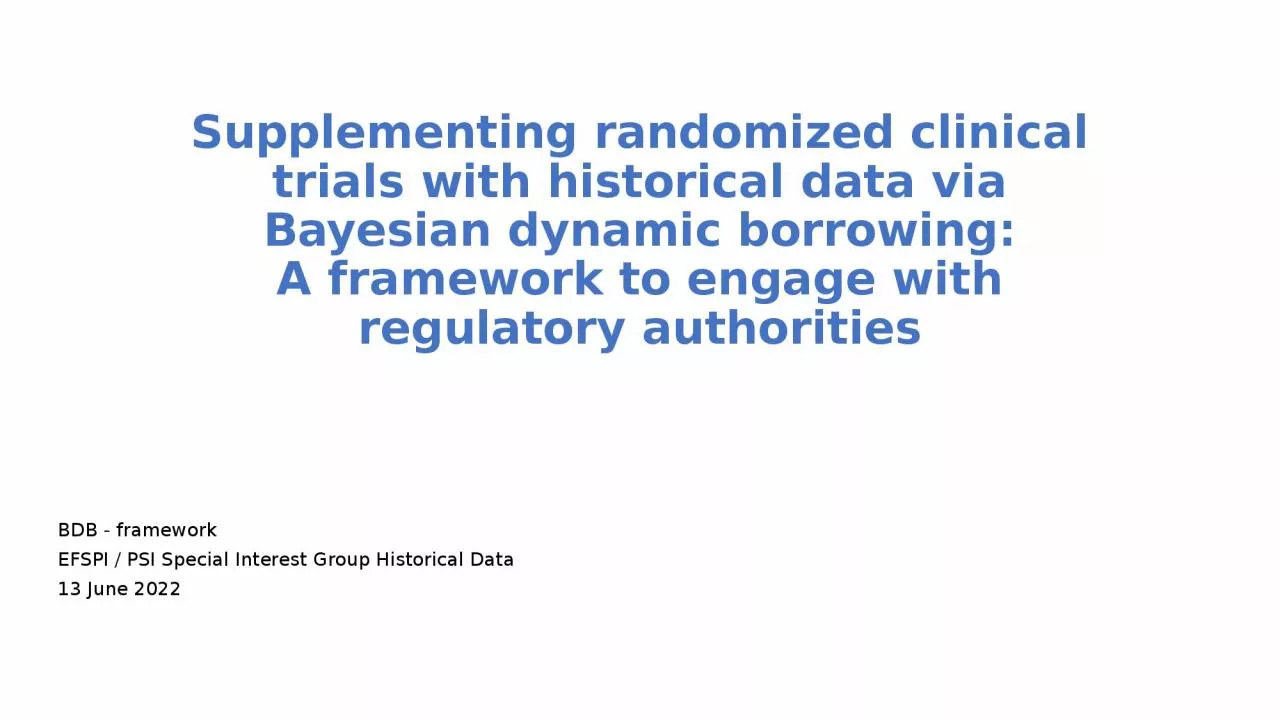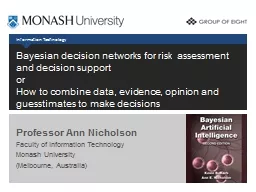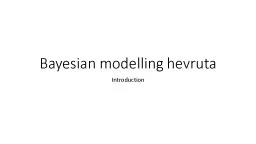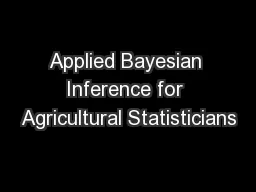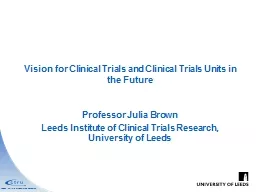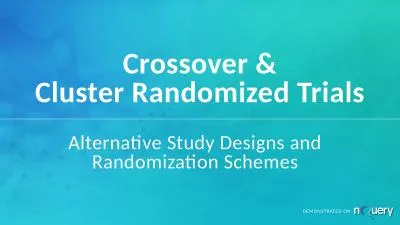PPT-Supplementing randomized clinical trials with historical data via Bayesian dynamic borrowing:
Author : genevieve | Published Date : 2024-02-09
A framework to engage with regulatory authorities BDB framework EFSPI PSI Special Interest Group Historical Data 13 June 2022 Doubleblind randomised study experimental
Presentation Embed Code
Download Presentation
Download Presentation The PPT/PDF document "Supplementing randomized clinical trials..." is the property of its rightful owner. Permission is granted to download and print the materials on this website for personal, non-commercial use only, and to display it on your personal computer provided you do not modify the materials and that you retain all copyright notices contained in the materials. By downloading content from our website, you accept the terms of this agreement.
Supplementing randomized clinical trials with historical data via Bayesian dynamic borrowing:: Transcript
Download Rules Of Document
"Supplementing randomized clinical trials with historical data via Bayesian dynamic borrowing:"The content belongs to its owner. You may download and print it for personal use, without modification, and keep all copyright notices. By downloading, you agree to these terms.
Related Documents

